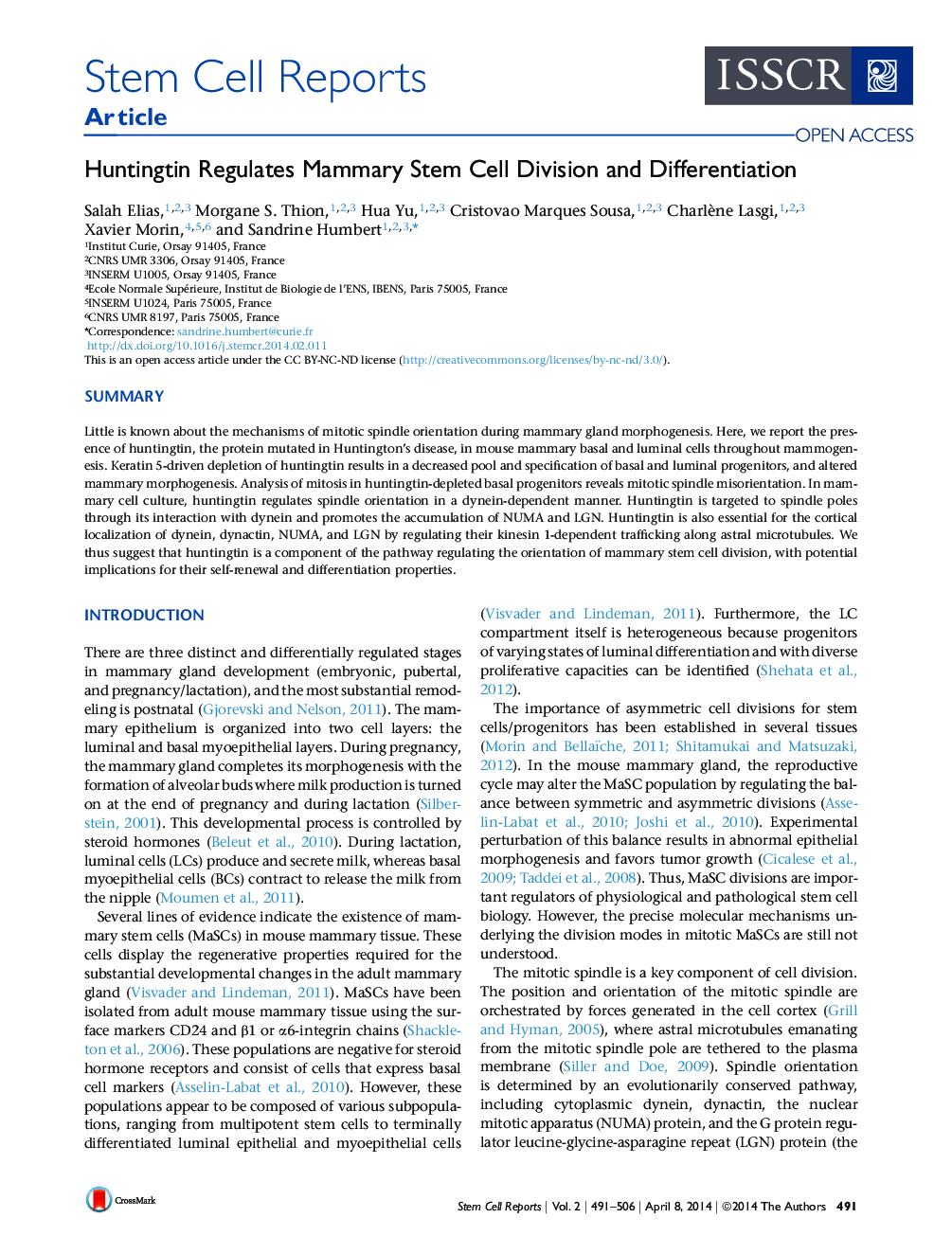| Article ID | Journal | Published Year | Pages | File Type |
|---|---|---|---|---|
| 2093817 | Stem Cell Reports | 2014 | 16 Pages |
•HTT regulates MaSC self-renewal and cell fate specification•HTT is essential for mammary epithelial morphogenesis in vivo•HTT regulates spindle orientation in a dynein-dependent manner•HTT mediates the cortical localization of dynein/dynactin/LGN/NUMA through kinesin 1
SummaryLittle is known about the mechanisms of mitotic spindle orientation during mammary gland morphogenesis. Here, we report the presence of huntingtin, the protein mutated in Huntington’s disease, in mouse mammary basal and luminal cells throughout mammogenesis. Keratin 5-driven depletion of huntingtin results in a decreased pool and specification of basal and luminal progenitors, and altered mammary morphogenesis. Analysis of mitosis in huntingtin-depleted basal progenitors reveals mitotic spindle misorientation. In mammary cell culture, huntingtin regulates spindle orientation in a dynein-dependent manner. Huntingtin is targeted to spindle poles through its interaction with dynein and promotes the accumulation of NUMA and LGN. Huntingtin is also essential for the cortical localization of dynein, dynactin, NUMA, and LGN by regulating their kinesin 1-dependent trafficking along astral microtubules. We thus suggest that huntingtin is a component of the pathway regulating the orientation of mammary stem cell division, with potential implications for their self-renewal and differentiation properties.
Graphical AbstractFigure optionsDownload full-size imageDownload as PowerPoint slide
